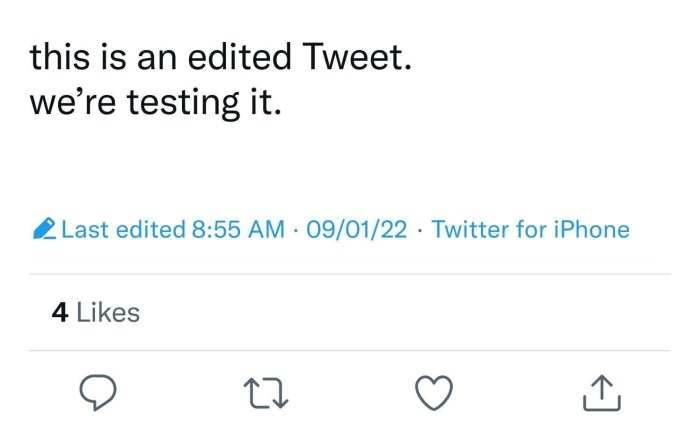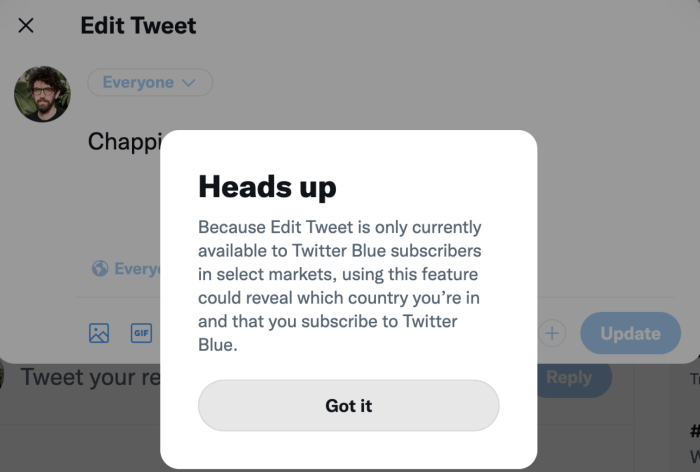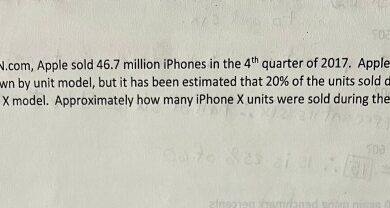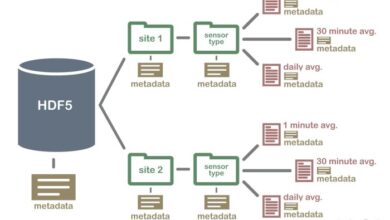
You Will Soon Be Able to Edit Tweets
You Will Soon Be Able to Edit Tweets – a statement that would have seemed unimaginable just a few years ago. Twitter, the platform known for its brevity and its unforgiving nature, is finally embracing the power of editing.
This monumental shift is a testament to the platform’s evolution, responding to years of user feedback and recognizing the need for greater flexibility in communication. The ability to edit tweets, long a coveted feature, promises to transform how we interact on the platform, bringing a new level of control and nuance to our online conversations.
The introduction of the editing feature marks a turning point in Twitter’s history, a move away from the rigid, “what you see is what you get” approach that defined its early days. The new feature is a testament to Twitter’s commitment to listening to its users and adapting to their evolving needs.
It also raises intriguing questions about the future of Twitter, exploring the potential for further innovation and the potential impact on how we communicate online.
The Evolution of Twitter Editing
Twitter, known for its brevity and real-time updates, has long been a platform where mistakes are permanent. The “no editing” policy, ingrained in the platform’s DNA, reflected the immediacy and rawness of its early days. However, times have changed, and with the evolution of user expectations and the rise of social media’s influence, Twitter has finally embraced the possibility of editing tweets.This shift in policy is a testament to the power of user feedback and the recognition of the need for flexibility.
Twitter users have consistently voiced their desire for an edit button, acknowledging the potential for correcting errors, clarifying intentions, and improving the overall user experience.
The Rationale Behind the Edit Feature
The introduction of the edit feature is not just about fixing typos; it represents a significant step towards enhancing user control and fostering a more polished online environment. Here’s a breakdown of the rationale behind this change:
- User Empowerment:Editing tweets empowers users to take ownership of their content and present it in the best possible light. This ability to refine and correct mistakes fosters a sense of accountability and encourages users to communicate more thoughtfully.
- Reduced Error Propagation:Misspelled words, grammatical errors, and factual inaccuracies can spread rapidly on social media, leading to misinformation and confusion. The edit feature allows users to correct these errors before they escalate, mitigating the potential for negative consequences.
- Improved Communication:The ability to edit tweets can facilitate clearer and more effective communication. Users can clarify their thoughts, refine their arguments, and ensure their messages are understood as intended. This leads to more meaningful interactions and a more productive online community.
Comparison to Previous Attempts
The idea of an edit button for Twitter is not new. Over the years, various proposals and attempts have been made to introduce such a feature. However, these initiatives often faced challenges related to technical complexities, potential misuse, and concerns about preserving the platform’s authenticity.
- Early Proposals:Early proposals for an edit button focused on a simple “edit” option that allowed users to make changes to their tweets within a limited timeframe. These proposals, however, were met with skepticism due to concerns about the potential for abuse, such as altering the meaning of a tweet after it had already gained significant attention.
- The “Edit History” Feature:In 2016, Twitter introduced an “edit history” feature that allowed users to view the different versions of their tweets. While this feature provided transparency, it did not offer the ability to directly edit tweets, leaving users with the option to simply delete and re-post their content.
This approach, while offering some degree of accountability, did not fully address the user demand for an editing function.
- The Current Edit Feature:The current edit feature represents a significant departure from previous attempts. It offers a limited window for editing, preventing the alteration of tweets after they have been widely disseminated. The edit history is also preserved, providing transparency and accountability.
This approach strikes a balance between user control and preserving the platform’s integrity.
Functionality and Limitations
The ability to edit tweets is a significant change for Twitter, potentially altering how users interact with the platform. This feature introduces new functionalities and limitations that are crucial to understand.
It’s crazy to think that soon we’ll be able to edit tweets! I mean, think of all the typos and misspellings we’ve all sent out into the world. But while we’re waiting for that feature, there’s some sad news: the mom of ballerina Michaela Mabinty Deprince, Elaine, tragically passed away within 24 hours.
You can read more about it here , but it’s a reminder that life is precious and we should cherish every moment. Anyway, back to the topic of editing tweets, I’m definitely looking forward to that day!
Editing Capabilities
Twitter’s edit feature allows users to modify the text of their tweets within a limited time frame. This time frame is currently set at 30 minutes after a tweet is posted. The edit feature is designed to be user-friendly, with a clear visual indicator for edited tweets.
When a tweet is edited, a small icon appears next to the timestamp, indicating that the tweet has been modified.
Limitations of the Editing Feature
While the editing feature offers flexibility, it also presents limitations that could affect how users interact with the platform.
The ability to edit tweets is coming soon, and while I’m excited about the potential for fixing typos, it makes me wonder about the ethical implications. Is it cheating to use AI to create art, as explored in this recent article about a fine arts competition winner he used ai to win a fine arts competition was it cheating ?
The line between creativity and automation is blurring, and it’ll be interesting to see how this impacts our perception of what constitutes “original” content.
Impact on Authenticity and Permanence
The ability to edit tweets raises concerns about the authenticity and permanence of information shared on Twitter. Since tweets can be modified after publication, users may have difficulty verifying the original content, leading to potential confusion and misinformation.
Potential for Abuse and Misuse
The edit feature could be misused to alter the meaning of a tweet or to spread false information. For instance, a user could edit a tweet to remove an offensive statement or to change the context of a conversation.
Technical Constraints
There are also technical limitations to the editing feature. For example, users can only edit a tweet a limited number of times, preventing excessive modifications. Additionally, edits are limited to the text of the tweet, excluding other elements like images or videos.
It’s pretty wild to think that soon we’ll be able to edit tweets! But with that kind of power comes a lot of responsibility. Speaking of responsibility, the Champions League is heating up, and experts are having a tough time deciding who’s going to take home the trophy.
Champions League picks experts split on Kylian Mbappé, Real Madrid, Barcelona, Arsenal – all in the mix to win. With so many contenders, I’m excited to see how it all unfolds, and I can’t wait to see how the new edit button impacts all the banter surrounding the big games!
Impact on Users and Content: You Will Soon Be Able To Edit Tweets

The introduction of an edit button on Twitter has the potential to revolutionize how users engage and communicate on the platform. It could significantly impact user engagement, content creation, and the overall flow of information. This feature could have profound implications for various user groups, including content creators, journalists, and public figures.
Increased User Engagement and Reduced Errors, You will soon be able to edit tweets
The ability to edit tweets can potentially boost user engagement on Twitter. Users might be more willing to share their thoughts and opinions knowing they can correct any mistakes or typos. This can lead to a more open and dynamic conversation, with users feeling more confident in their contributions.
Additionally, the edit button could reduce the prevalence of embarrassing typos and factual errors, creating a more polished and credible platform for communication.
Technical and Ethical Considerations

The introduction of tweet editing raises significant technical and ethical considerations. While the ability to correct mistakes or refine messages is appealing, it also presents challenges in maintaining the integrity and transparency of online discourse.
Technical Challenges of Implementing Tweet Editing
Implementing tweet editing presents a complex technical challenge. One key concern is ensuring that the editing process is seamless and does not disrupt the user experience. The system needs to be designed to handle the constant stream of tweets, while simultaneously allowing for efficient editing and updating of past messages.
- Data Integrity and Consistency:Editing tweets could lead to inconsistencies in data analysis and research, as past tweets might not accurately reflect the original content. The platform must implement mechanisms to maintain data integrity and consistency, potentially by archiving the original tweet alongside the edited version.
- Real-time Updates:The system must handle real-time updates to tweets, ensuring that changes are reflected across various platforms and user interfaces. This requires efficient synchronization and data management to avoid delays or errors.
- Version Control:Implementing version control for tweets is crucial to maintain a historical record of changes and to provide transparency for users. This would allow users to track the evolution of a tweet and understand the changes made.
- Scalability and Performance:The system must be scalable to handle the massive volume of tweets and edits. This requires robust infrastructure and efficient algorithms to ensure the platform remains responsive and reliable.
Ethical Considerations of Content Modification
Tweet editing raises significant ethical concerns, particularly regarding the potential for misinformation and manipulation. While the ability to correct errors is valuable, it also presents opportunities for abuse.
- Misinformation and Manipulation:The ability to edit tweets can be used to spread misinformation or manipulate public opinion. Individuals or organizations might alter past tweets to conceal their true intentions or create a false narrative.
- Accountability and Transparency:Editing tweets raises questions about accountability and transparency. If users can modify their past statements, it becomes difficult to hold them responsible for their initial claims or actions.
- Impact on Public Discourse:The ability to edit tweets could alter the dynamics of public discourse, potentially leading to a less reliable and trustworthy online environment. This could erode public trust in information shared on social media platforms.
The Future of Twitter Editing

Twitter’s editing feature is still in its early stages, but it has the potential to significantly impact how users interact with the platform. As technology evolves, the editing feature is likely to become more sophisticated and integrated into the Twitter experience.
Future Developments of Twitter Editing
The evolution of Twitter’s editing feature is likely to be driven by user feedback, technological advancements, and the platform’s strategic goals.
- Enhanced Editing Capabilities:The editing feature could expand to include more advanced functionalities, such as the ability to edit images and videos, or even collaborate on tweets with other users in real-time.
- Integration with Other Features:Twitter could integrate the editing feature with other existing functionalities, such as polls, threads, or even direct messages. This would allow users to edit content across different aspects of the platform.
- AI-Powered Editing:Artificial intelligence (AI) could play a role in automating editing tasks, suggesting edits, or even automatically correcting grammar and spelling errors. This would make the editing process more efficient and accessible for all users.
- Contextual Editing:The editing feature could become more contextual, allowing users to edit tweets based on their specific audience or the context of the conversation. This could involve targeted edits for different user groups or even tailoring edits to specific platforms where the tweet is shared.
The Impact of Twitter Editing on Users and Content
The evolution of Twitter editing is likely to have a significant impact on how users interact with the platform and the nature of content shared.
- Increased Engagement:The ability to edit tweets could lead to increased engagement, as users feel more confident in sharing their thoughts and ideas knowing they can correct any mistakes or refine their message.
- Improved Content Quality:The editing feature could contribute to higher-quality content on Twitter, as users have the opportunity to polish their tweets before they are shared with a wider audience.
- Reduced Spread of Misinformation:The editing feature could help to reduce the spread of misinformation by allowing users to correct any errors or inaccuracies in their tweets before they are widely shared.
- New Content Formats:The evolution of Twitter editing could lead to new content formats and creative expressions, as users experiment with the possibilities of editing tweets in innovative ways.






